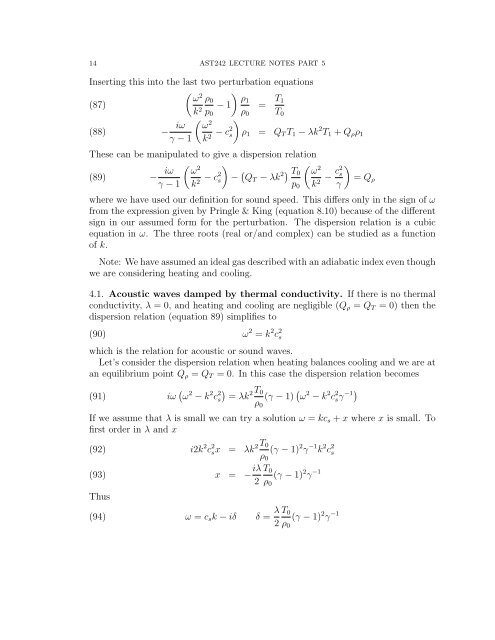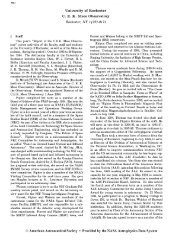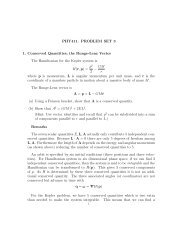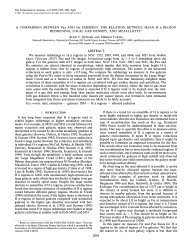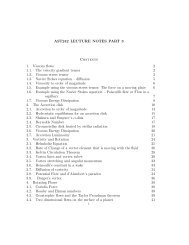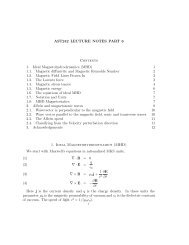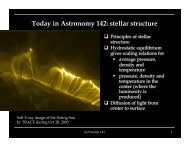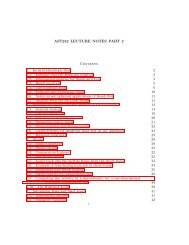AST242 LECTURE NOTES PART 5 Contents 1. Waves and ...
AST242 LECTURE NOTES PART 5 Contents 1. Waves and ...
AST242 LECTURE NOTES PART 5 Contents 1. Waves and ...
- No tags were found...
You also want an ePaper? Increase the reach of your titles
YUMPU automatically turns print PDFs into web optimized ePapers that Google loves.
14 <strong>AST242</strong> <strong>LECTURE</strong> <strong>NOTES</strong> <strong>PART</strong> 5Inserting this into the last two perturbation equations( ) ω2ρ 0 ρ1− 1 = T 1(87)k 2 p 0 ρ 0 T 0− iω ( ) ω2(88)γ − 1 k − 2 c2 s ρ 1 = Q T T 1 − λk 2 T 1 + Q ρ ρ 1These can be manipulated to give a dispersion relation(89) − iω ( ) ω2γ − 1 k − 2 c2 s − ( Q T − λk 2) ( )T 0 ω2p 0 k − c2 s= Q 2 ργwhere we have used our definition for sound speed. This differs only in the sign of ωfrom the expression given by Pringle & King (equation 8.10) because of the differentsign in our assumed form for the perturbation. The dispersion relation is a cubicequation in ω. The three roots (real or/<strong>and</strong> complex) can be studied as a functionof k.Note: We have assumed an ideal gas described with an adiabatic index even thoughwe are considering heating <strong>and</strong> cooling.4.<strong>1.</strong> Acoustic waves damped by thermal conductivity. If there is no thermalconductivity, λ = 0, <strong>and</strong> heating <strong>and</strong> cooling are negligible (Q ρ = Q T = 0) then thedispersion relation (equation 89) simplifies to(90) ω 2 = k 2 c 2 swhich is the relation for acoustic or sound waves.Let’s consider the dispersion relation when heating balances cooling <strong>and</strong> we are atan equilibrium point Q ρ = Q T = 0. In this case the dispersion relation becomes(91) iω ( ω 2 − k 2 c 2 s)= λk2 T 0ρ 0(γ − 1) ( ω 2 − k 2 c 2 sγ −1)If we assume that λ is small we can try a solution ω = kc s + x where x is small. Tofirst order in λ <strong>and</strong> x(92)(93)Thusi2k 2 c 2 sx = λk 2 T 0ρ 0(γ − 1) 2 γ −1 k 2 c 2 sx = − iλ 2T 0ρ 0(γ − 1) 2 γ −1(94) ω = c s k − iδ δ = λ 2T 0ρ 0(γ − 1) 2 γ −1


